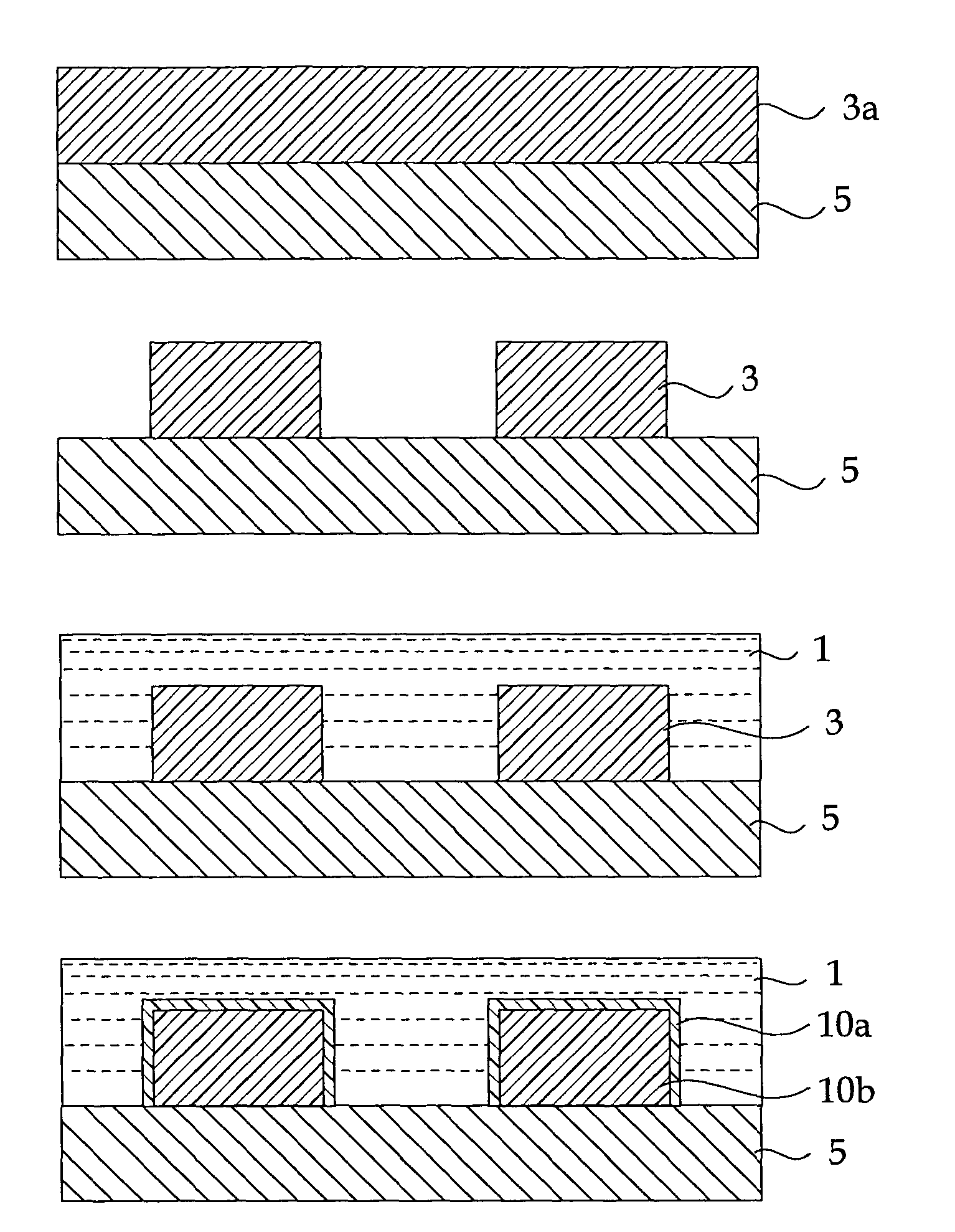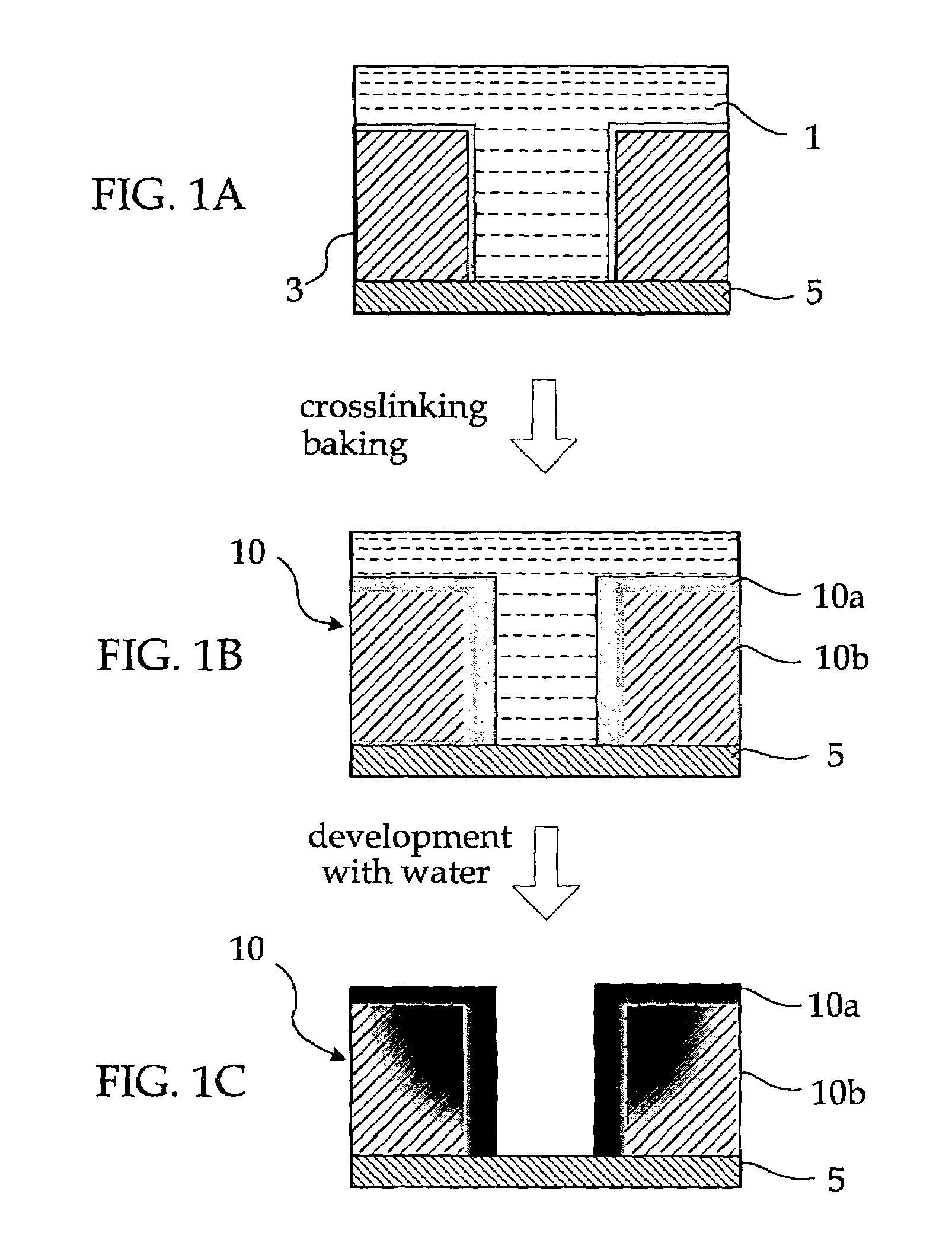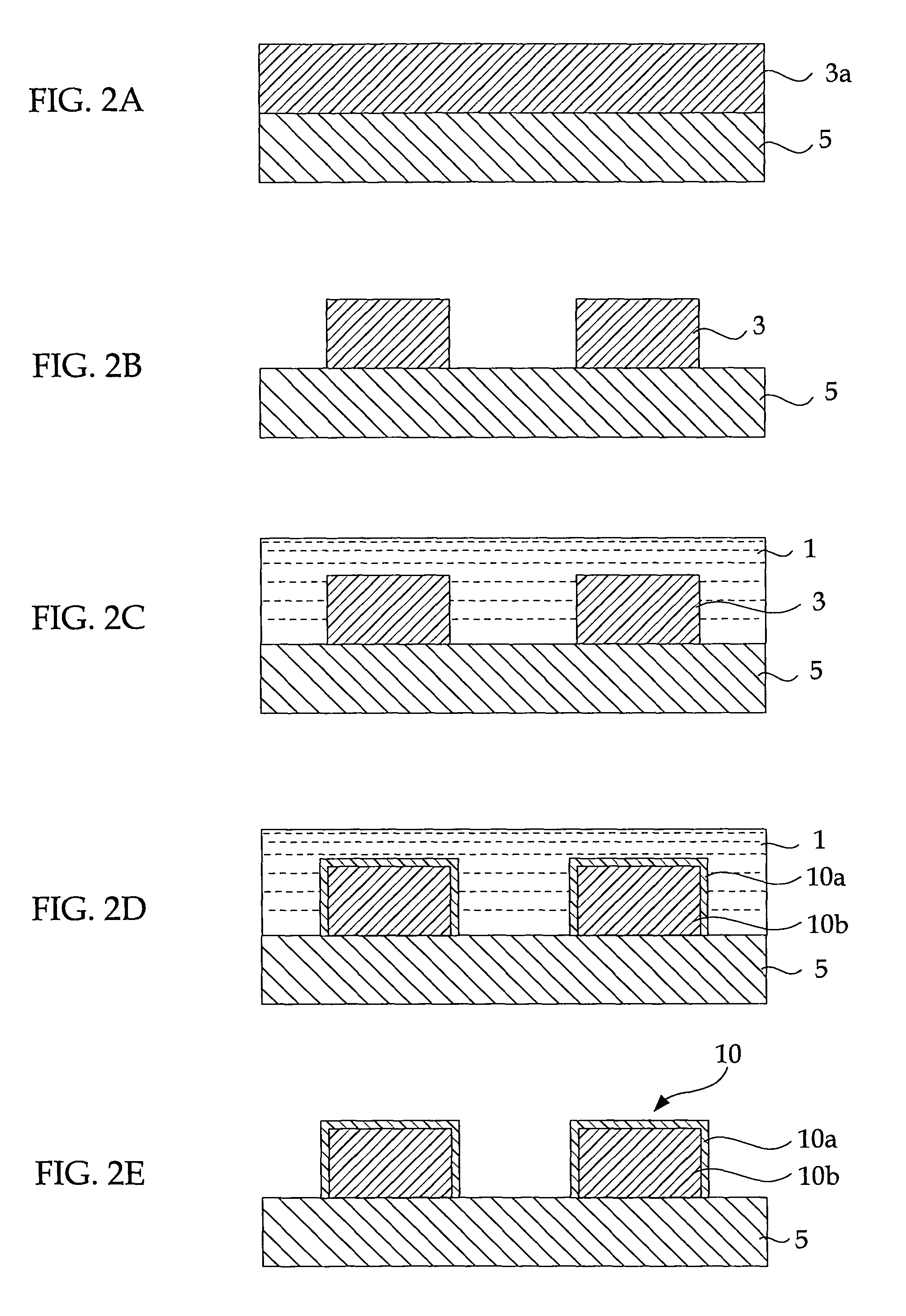Resist pattern thickening material, process for forming resist pattern, and process for manufacturing semiconductor device
a technology of resist pattern and thickening material, which is applied in the direction of photosensitive materials, instruments, photomechanical equipment, etc., can solve the problems of difficult development of new resist materials suitable for exposure using short wavelength light sources, high cost, etc., and achieve the effect of reducing cost and facilitating production
- Summary
- Abstract
- Description
- Claims
- Application Information
AI Technical Summary
Benefits of technology
Problems solved by technology
Method used
Image
Examples
example 1
Preparation of Resist Pattern Thickening Material
[0149]Resist pattern thickening materials A through F of the present invention having the compositions shown in Table 1 were prepared. Note that, in Table 1, the unit of the values in parentheses is parts by mass. In the “resin” column, “KW-3” is a polyvinyl acetal resin (manufactured by Sekisui Chemical Co., Ltd.). In the “crosslinking agent” column, “uril” is tetramethoxymethylglycol uril, and “urea” is N,N′-dimethoxymethyldimethoxyethylene urea. In the “surfactant” column, “TN-80” is a non-ionic surfactant (a polyoxyethylene monoalkylether surfactant manufactured by Asahi Denka Co., Ltd.). Further, a mixed liquid of pure water (deionized water) and isopropyl alcohol (whose mass ratio was pure water (deionized water):isopropyl alcohol=82.6:0.4) was used as the other main solvent component other than the resin, the crosslinking agent, and the nitrogen-containing compound.
[0150]
TABLE 1organicthickeningcross-linkingnitrogen-containings...
example 2
[0161]As shown in FIG. 3A, an interlayer insulating film 12 was formed on a silicon substrate 11. As shown in FIG. 3B, a titanium film 13 was formed by a sputtering method on the interlayer insulating film 12. Next, as shown in FIG. 3C, a resist pattern 14 was formed. By using the resist pattern 14 as a mask, the titanium film 13 was patterned by reactive ion etching so that openings 15a were formed. Subsequently, as shown in FIG. 3D, the resist pattern 14 was removed by reactive ion etching, and openings 15b were formed in the interlayer insulating film 12 by using the titanium film 13 as a mask.
[0162]Next, the titanium film 13 was removed by wet processing, and as shown in FIG. 4E, a TiN film 16 was formed on the interlayer insulating film 12 by a sputtering method. Subsequently, a Cu film 17 was grown by an electrolytic plating method on the TiN film 16. Next, as shown in FIG. 4F, leveling was carried out by CMP so that the barrier metal and the Cu film (first metal film) remaine...
example 3
Flash Memory and Process for Manufacturing Thereof
[0166]Example 3 is an example of the semiconductor device and process for manufacturing thereof of the present invention using the resist pattern thickening material of the present invention. Note that, in Example 3, resist films 26, 27, 29, 32 and 34 which will be described hereinafter are resist films which have been thickened by the same process as in Examples 1 and 2 by using the resist pattern thickening material of the present invention.
[0167]FIGS. 6A and 6B are top views (plan views) of a FLASH EPROM which is called a FLOTOX type or an ETOX type. Note that FIGS. 7A through 7C, FIGS. 8D through 8F, and FIGS. 9G through 9I are cross-sectional schematic views for explaining an example of a process for manufacturing the FLASH EPROM. In FIGS. 7A through 9I, the illustrations at the left sides are the memory cell portion (a first element region), and are schematic diagrams of the cross-section (the A direction cross-section) of the ...
PUM
| Property | Measurement | Unit |
|---|---|---|
| Size | aaaaa | aaaaa |
| Size | aaaaa | aaaaa |
| Size | aaaaa | aaaaa |
Abstract
Description
Claims
Application Information
 Login to View More
Login to View More - R&D
- Intellectual Property
- Life Sciences
- Materials
- Tech Scout
- Unparalleled Data Quality
- Higher Quality Content
- 60% Fewer Hallucinations
Browse by: Latest US Patents, China's latest patents, Technical Efficacy Thesaurus, Application Domain, Technology Topic, Popular Technical Reports.
© 2025 PatSnap. All rights reserved.Legal|Privacy policy|Modern Slavery Act Transparency Statement|Sitemap|About US| Contact US: help@patsnap.com



